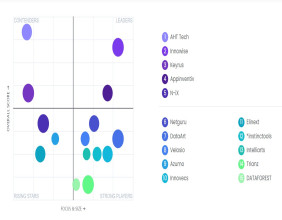Highlights
- Insider ownership remains robust at 74%.
- Market value decline challenges recent insider investments.
- Potential for increased institutional interest.
In the financial landscape of GQG Partners Inc. (ASX:GQG), a significant stake is held by insiders, who currently own 74% of the company. This strong internal confidence is typically viewed positively, suggesting that those closest to the company are heavily invested in its success. However, despite this backing, GQG Partners Inc. has experienced a noticeable decrease in market value, shedding AU$576 million just recently.
The decline in market capitalization comes as a setback to insiders who have increased their shares in the hope of substantial returns. These developments unfold as the company's valuation does not align with insider expectations, sparking curiosity about the dynamics at play within its shareholder structure.
Further scrutiny into the ownership reveals that while institutional investors hold a minor portion, their interest might grow if the company strengthens. Historically, such shifts can lead to a price increase when several institutions vie to acquire stakes. Meanwhile, the general public holds 18% of the shares, giving them a notable yet not dominant influence over company decisions.
Among the insiders, Rajiv Jain, a key executive, holds the majority stake at 70%, positioning him as a critical figure in the strategic direction of GQG Partners Inc. This concentration of shares among top insiders, including board members, underscores a commitment that could drive long-term value.
Conversely, only a small slice, 4.2%, is owned by private companies, an aspect that might require more exploration to understand any further implications on corporate governance and decision-making.
This intricate ownership tapestry not only illustrates who stands to gain or lose but also highlights the potential shifts in investor dynamics, possibly heralding a new phase of institutional involvement and valuation adjustments. As GQG Partners Inc. navigates these challenges, stakeholders and potential investors should keep a close watch on how these internal and external influences could shape the company's future in the market.




